Table of Contents
- Understanding Yield Farming
- Popular Platforms and Protocols
- Types of Yield Farming Strategies
- The Profitability of Yield Farming
- Historical Performance
- Current Market Conditions
- Factors Influencing Profitability
- Interest Rate and Volatility
- Network Fees and Impermanent Loss
- Risks and Challenges
- Market Risks
- Smart Contract Risks
- Regulatory Risks
- Proven Ways to Maximize Yield Farming Profitability
- Diversification
- Risk Management
- Staying Informed and Optimal
- Conclusion: Future Outlook of Yield Farming
Table of Contents
- Understanding Yield Farming
- Popular Platforms and Protocols
- Types of Yield Farming Strategies
- The Profitability of Yield Farming
- Historical Performance
- Current Market Conditions
- Factors Influencing Profitability
- Interest Rate and Volatility
- Network Fees and Impermanent Loss
- Risks and Challenges
- Market Risks
- Smart Contract Risks
- Regulatory Risks
- Proven Ways to Maximize Yield Farming Profitability
- Diversification
- Risk Management
- Staying Informed and Optimal
- Conclusion: Future Outlook of Yield Farming
Yield Farming in DeFi: Is it Still Profitable?
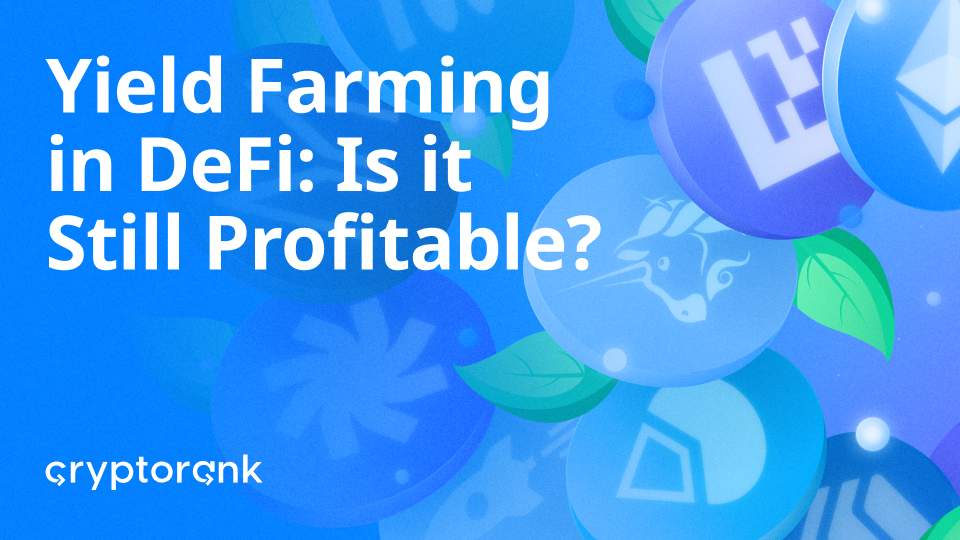

Key Takeaways:
-
Yield farming involves lending and staking cryptocurrencies for tokens or rewards, although market trends, volatility, and liquidity often impact profitability.
-
New staking protocols like Ether.fi, EigenLayer, RocketPool, and Superform are taking the stage alongside platforms like Uniswap, Compound, Aave, SushiSwap, and Curve that offer unique yields and rewards.
-
Interest rates, market risks, volatility, fees, impermanent loss, smart contracts, and regulatory risks impact yield farming profitability.
-
The future of yield farming in DeFi remains promising considering the innovations in L2s, liquid staking and restaking, real-world assets, and institutional adoption.
Understanding Yield Farming
Yield farming relies on liquidity pools, staking, and rewards. Investors deposit their tokens into liquidity pools on dApps, providing the capital needed for lending, borrowing, and swapping on-chain. They receive LP tokens as receipts for their deposits, which entitle holders to fees and other rewards in proportion to their share of the liquidity pool. These LP tokens allow investors to withdraw their original deposits plus any rewards earned whenever they like. The amount an investor can earn by leaving their positions in the liquidity pool for a year is measured by the APY (annual percentage yield). It’s important to understand that yield farmers can increase their returns by leaving their capital and rewards in the pool to compound, boosting future earnings. These additional earnings depend on the pool’s compounding period, such as daily. The reward, calculated as APY, represents the yield in yield farming, which is what investors are ultimately after.
Popular Platforms and Protocols
Ethereum is still the leading blockchain for yield farming. The dominant protocols on Ethereum include Compound, Uniswap, MakerDAO, and Aave, most of which gained popularity as pioneering lending and trading platforms on the Ethereum network. Uniswap is popular for its seamless swaps and APY, offering both stable and variable interest rates that appeal to conservative yield farmers. Compound provides competitive interest rates through a user-friendly interface. MakerDAO is the largest collateralized debt position (CDP) platform in DeFi and the issuer of the crypto-backed DAI stablecoin. Other established yield farming platforms include SushiSwap, Superform, and Curve, each offering unique features like yield aggregation, auto-compounding, and governance incentives.

A new wave of dominant protocols has emerged, driven by recent market trends and the shift toward the restaking narrative. Restaking protocols like EigenLayer, Ether.fi, Rocket Pool, and the liquid staking protocol Lido now boast a higher TVL than previously dominant platforms. Staking allows farmers to compound their ETH staking rewards by reinvesting them into liquidity pools for additional yield rewards. This strategy reinforces Ethereum’s proof-of-stake consensus, resulting in higher yield farming rewards. There are also a number of emerging protocols like Tokemak, Mitosis, Rari Capital, Idle Finance, and BarnBridge.

Types of Yield Farming Strategies
Yield farmers deploy various strategies to reduce risks while maximizing rewards. Liquidity provision involves adding pairs of tokens, typically equivalent in stable currencies, to a liquidity pool to earn fees and other rewards. In contrast, single-sided staking involves staking single tokens like ETH or SOL to earn interest.
Risk-adjusted yield farming strategies can be conservative, involving low-volatility pairs and stablecoins; moderate, involving balanced portfolios in diversified liquidity pools; or aggressive, leveraging high-volatility pairs.
The Profitability of Yield Farming
Historical Performance
At the peak of the yield farming boom in 2021-2022, the top yield farming protocols offered an APY above 100%. The most remarkable among these protocols were unsustainable yield platforms like Olympius DAO and its forks, such as Abracadabra and Wonderland, which offered an unreasonable excess of 4,000% APY. There were also other successful ventures like Yearn.fi (150% APY), Alchemix (80% APY), and Harvest Finance (50% APY).
Current Market Conditions
Market trends impact yield farming through volatility and liquidity. During a bear market, investors and farmers reduce deposits into liquidity pools, negatively affecting the potential APY earned from yield farming. Volatility is another factor that can impact the current yield from farming activities. A highly volatile market discourages yield farming, while relatively stable market conditions encourage investors to add more funds to liquidity pools.
Factors Influencing Profitability
Interest Rate and Volatility
Interest rates and reward tokens impact yield farming profitability, with higher interest rates or APY leading to increased deposits in a particular liquidity pool. More deposits reduce the value of depositors' shares in the pool and their overall returns from yield farming.
Network Fees and Impermanent Loss
Impermanent loss, or the loss suffered from keeping funds in a liquidity pool instead of holding them in the same asset on platforms like centralized exchanges, is a risk in yield farming. The volatile nature of liquidity pools can result in the erosion of token value over time. Additionally, gas fees and transaction costs on protocols like Ethereum during network congestion can also reduce yield farming profits.
Risks and Challenges
Market Risks
Sudden market changes impact yield farming activities and profitability. Token price fluctuations, as seen earlier, lead to impermanent loss, while a sudden fall in price can wipe out an entire yield farming portfolio. There is also the liquidity risk of withdrawal freezes, which can trap funds, as well as the risk of market manipulation or sandwich attacks, which can artificially push token prices to zero.
Smart Contract Risks
Liquidity pools are smart contracts designed to hold funds in a defined ratio, usually expressed as X * Y = K (see AMM). These contracts may hold multiple millions of dollars, as high APY pushes yield farmers to invest in the pools. With such a large amount of money stored in a contract, hackers often target these pools through complicated yet cleverly orchestrated attacks, such as sandwich attacks or other black-hat strategies, to drain and steal deposited funds. Notable examples include the Poly Network hack, which led to a staggering $610 million stolen, and the Ronin Bridge exploit, totaling $625 million.
Regulatory Risks
Regulatory changes can adversely impact yield farming activities or lead to the collapse of entire DeFi protocols. A good example of such a case is Celsius Network, which faced serious regulatory scrutiny that led to its eventual bankruptcy. BlockFi also agreed to a $100 million fine regarding interest-bearing accounts before shutting down in May 2024. Regulatory scrutiny has also forced MakerDAO to reconsider its strategy for issuing DAI stablecoins. Both Celsius Network and BlockFi are CeFi protocols.
Proven Ways to Maximize Yield Farming Profitability
Diversification
Spreading investments across DeFi platforms, strategies, and assets is one way to maximize yield farming returns. This approach protects investors from overexposure and other risks associated with yield farming. While there is no strict rule of thumb, a diversified yield farming portfolio can include adding liquidity to multiple lending platforms like Compound and Aave, providing liquidity on major DEXs like SushiSwap and Uniswap, and holding a range of assets from stablecoins like USDT to tokens like leveraged ETH and BNB.
An example (not financial advice) of such a portfolio includes:
Conservative:
50% of funds invested in USDC on Aave, 30% in ETH on Lido, while the remaining 20% can be held as desired.
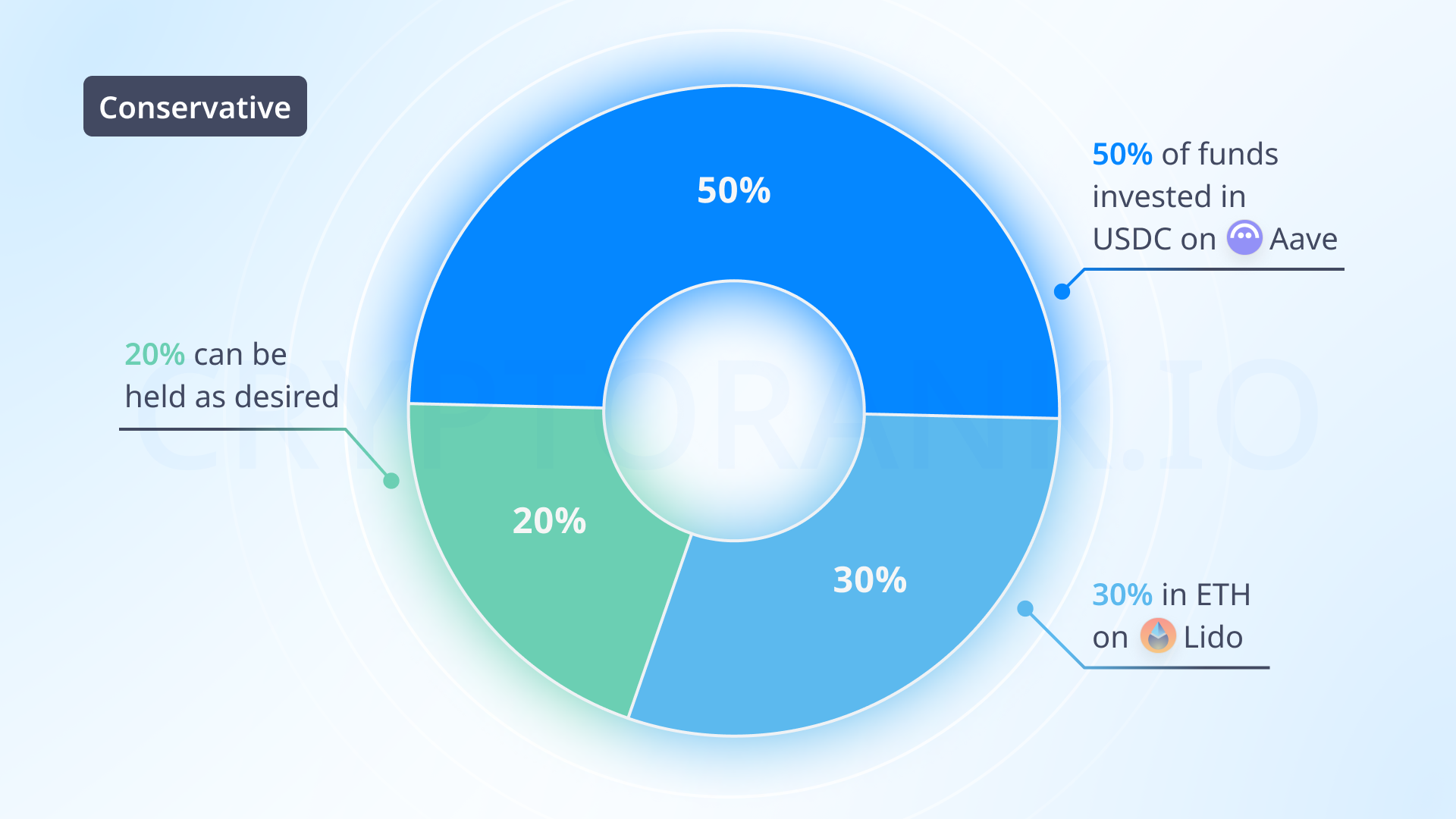
Balanced:
30% of funds invested in Uniswap, 25% in Compound, with the remaining 45% spread across other platforms or used at discretion.
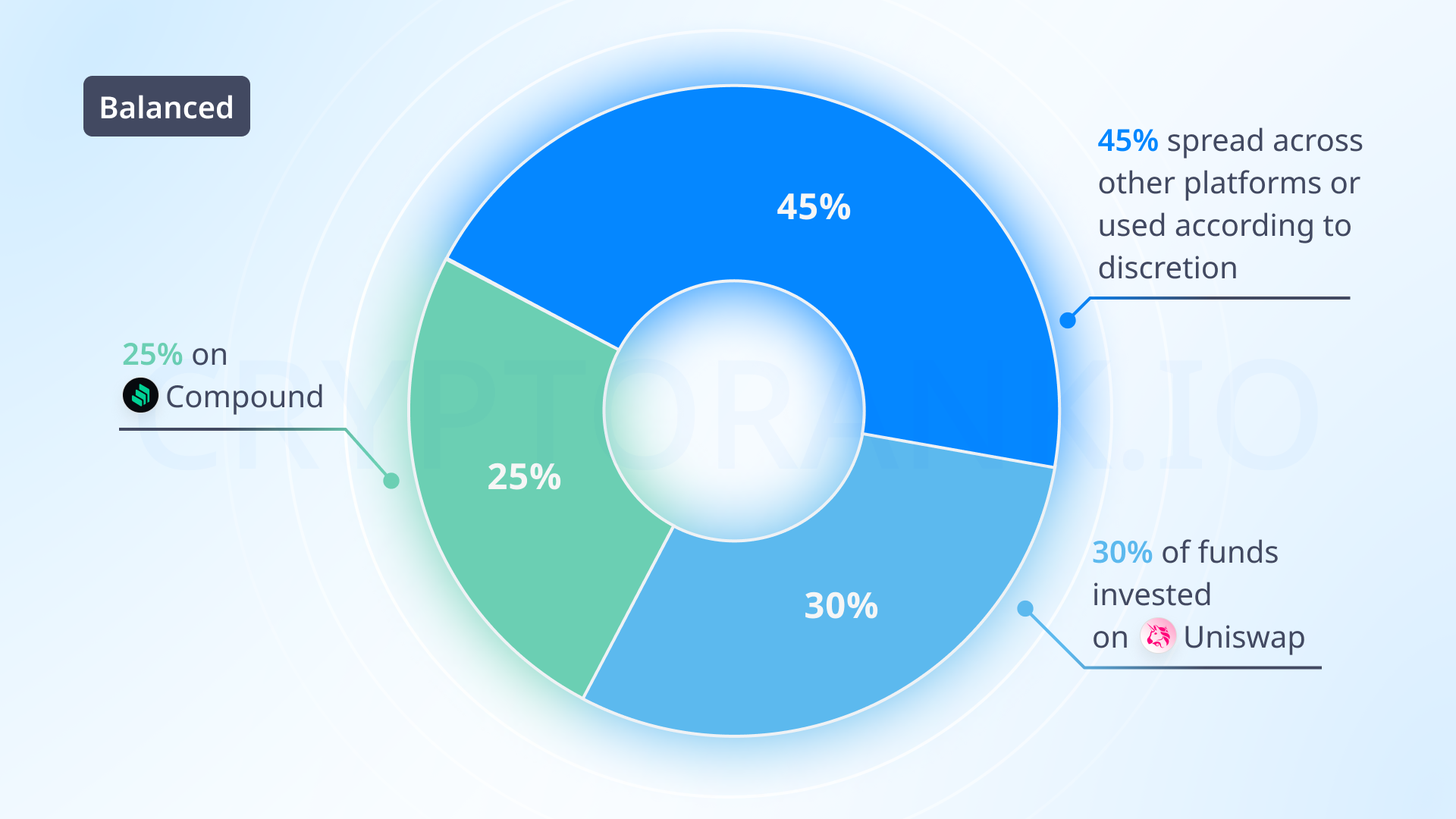
Aggressive:
30% of funds invested in the highest weekly yield, adjusted weekly, and 20% in Ether.fi ETH, while the remaining 50% could be split among other high-yield, high-risk assets.
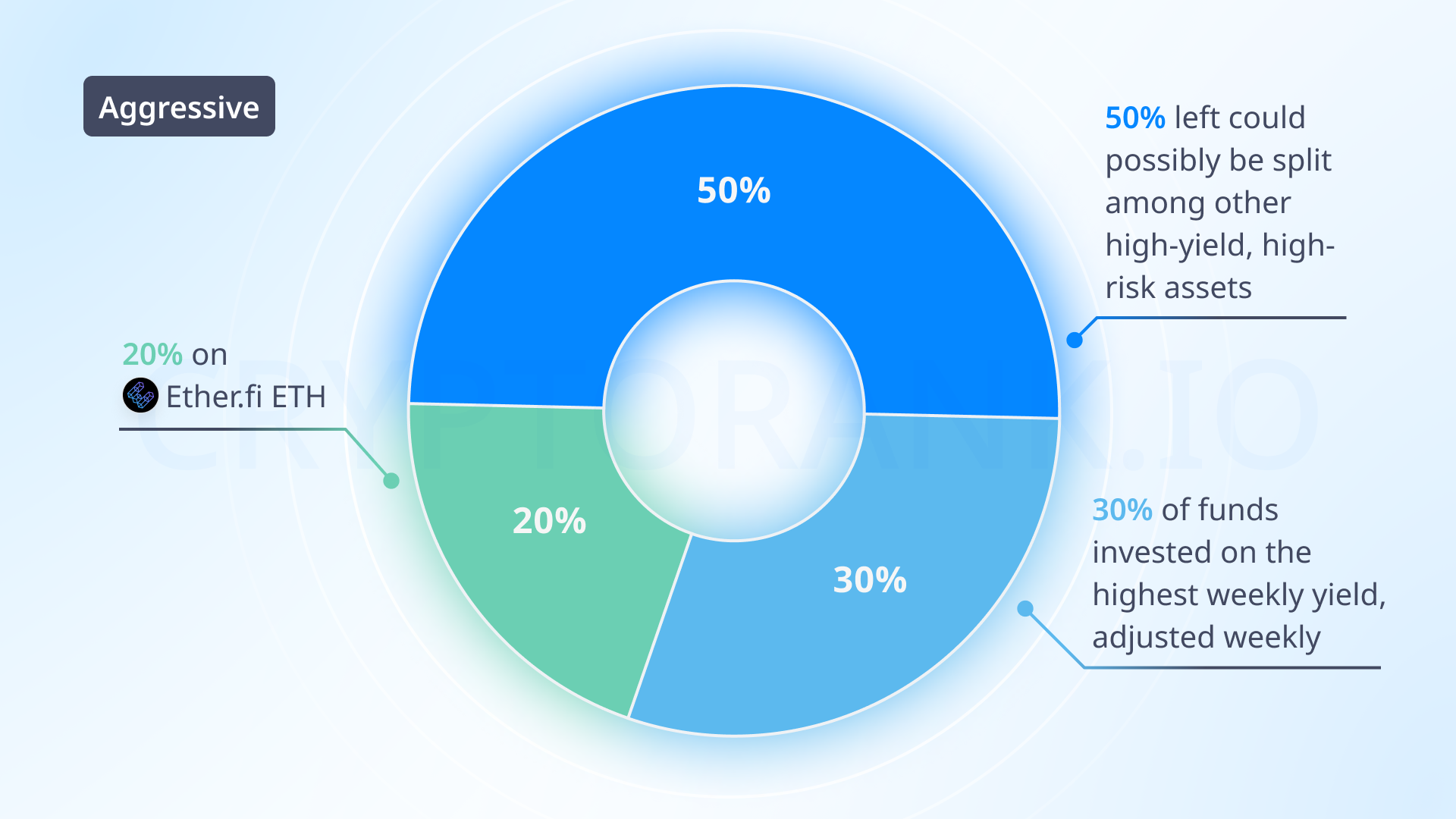
Risk Management
The best way to manage risks in DeFi is to avoid overexposure to a single platform or strategy, as explained under diversification. Next, DeFi yield farmers must track their positions using tools like the CryptoRank Portfolio Tracker. There are also risk assessment tools like RiskDAO and DeFiscore for evaluating, assessing, measuring, and comparing risks on DeFi platforms.
Staying Informed and Optimal
Farmers must be proactive because yield farming is one of the most volatile aspects of the crypto industry. It is important to check pools three to four times daily for highly aggressive strategies, and once for major tokens with deep liquidity and utility. Pools with declining prices and APY should also be abandoned in favor of more profitable pools to prevent further losses and profit evaporation.
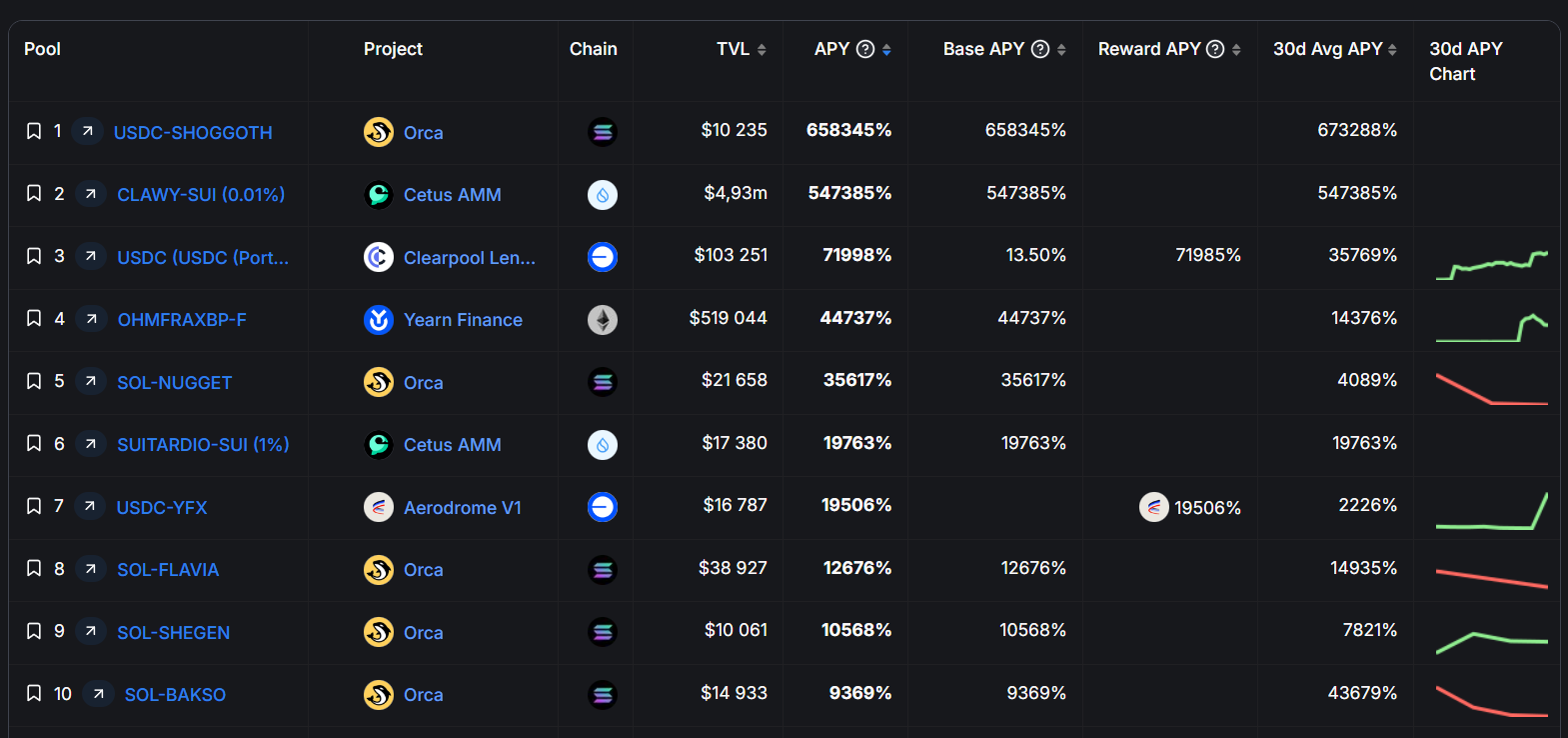
Conclusion: Future Outlook of Yield Farming
The evolution of layer 2 scaling solutions like Optimism, Arbitrum, and ZkSync, with significantly lower fees, has reduced the congestion risks of farming on Ethereum. Another important factor driving the yield farming narrative in DeFi is the liquid staking of native ETH, pioneered by platforms like EigenLayer and Ether.fi. This staking narrative has rekindled the desire to farm in a less risky way, attracting billions in retail and institutional funds. Additionally, real-world assets (RWA) and nodes can drive better yields from economic activities and investments in the real world.
Based on current trends, we may see advanced scalability and usability, institutional adoption, regulatory clarity, and the creation of more innovative protocols to further the yield farming narrative. These advances combined could drive sustainability and lead to better overall outcomes for yield farmers.
Disclaimer: This post was independently created by the author(s) for general informational purposes and does not necessarily reflect the views of ChainRank Analytics OÜ. The author(s) may hold cryptocurrencies mentioned in this report. This post is not investment advice. Conduct your own research and consult an independent financial, tax, or legal advisor before making any investment decisions. The information here does not constitute an offer or solicitation to buy or sell any financial instrument or participate in any trading strategy. Past performance is no guarantee of future results. Without the prior written consent of CryptoRank, no part of this report may be copied, photocopied, reproduced or redistributed in any form or by any means.
Table of Contents
- Understanding Yield Farming
- Popular Platforms and Protocols
- Types of Yield Farming Strategies
- The Profitability of Yield Farming
- Historical Performance
- Current Market Conditions
- Factors Influencing Profitability
- Interest Rate and Volatility
- Network Fees and Impermanent Loss
- Risks and Challenges
- Market Risks
- Smart Contract Risks
- Regulatory Risks
- Proven Ways to Maximize Yield Farming Profitability
- Diversification
- Risk Management
- Staying Informed and Optimal
- Conclusion: Future Outlook of Yield Farming
Table of Contents
- Understanding Yield Farming
- Popular Platforms and Protocols
- Types of Yield Farming Strategies
- The Profitability of Yield Farming
- Historical Performance
- Current Market Conditions
- Factors Influencing Profitability
- Interest Rate and Volatility
- Network Fees and Impermanent Loss
- Risks and Challenges
- Market Risks
- Smart Contract Risks
- Regulatory Risks
- Proven Ways to Maximize Yield Farming Profitability
- Diversification
- Risk Management
- Staying Informed and Optimal
- Conclusion: Future Outlook of Yield Farming